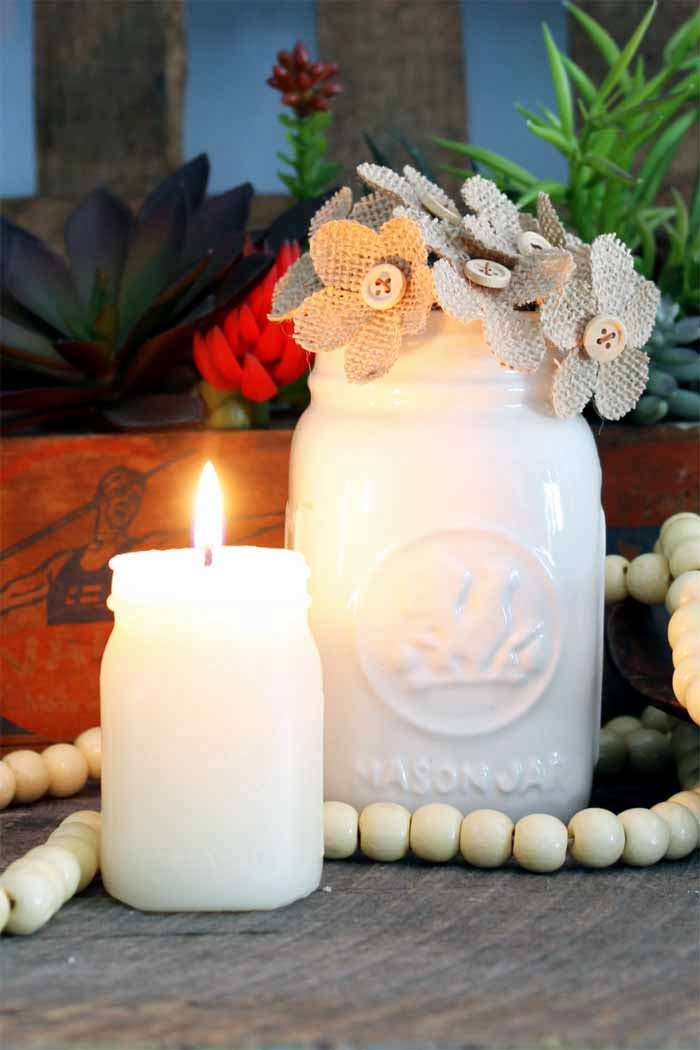What is a flashpoint in candle making? The process of creating candles involves various materials that require careful handling and understanding. One crucial aspect of candle making is the flashpoint, which plays a significant role in ensuring safety and quality in the production process. In this article, we will delve into the basics of candle making and why understanding flashpoints is crucial for anyone involved in this craft.
Candle making is an art form that entails melting wax, adding fragrance or essential oils, and pouring the mixture into molds to create beautiful and aromatic candles. However, it’s essential to note that certain materials used in candle making have specific flashpoints that need to be considered. Understanding what a flashpoint is, its significance in the candle making process, and how it impacts safety and quality is vital for any candle maker.
In this article, we will define what a flashpoint is in the context of candle making and explore its importance. We will also provide valuable insights into testing for flashpoints, handling materials with low flashpoints safely, and how flashpoints can influence fragrance selection. By the end of this article, you will have a comprehensive understanding of why knowing about flashpoints is crucial for successful and safe candle making.
What Is a Flashpoint in Candle Making
A flashpoint is a crucial factor to consider in the process of candle making. In simple terms, the flashpoint of a material is the temperature at which it produces enough vapor to ignite in the presence of an open flame or heat source. This means that understanding the flashpoint of the materials used in candle making is essential for ensuring safety and quality in the production process.
Significance of Flashpoints
The significance of understanding flashpoints lies in the safety and quality of the finished candles. Utilizing materials with low flashpoints can pose significant fire hazards during both the production and burning of candles. It also affects the performance and fragrance throw of the candle, as high-flashpoint materials tend to have a more stable scent and burn more evenly. Therefore, having knowledge about flashpoints plays a vital role in creating safe candles that perform effectively.
Importance of Defining Flashpoints
Defining what a flashpoint is not only helps candle makers understand its significance but also guides them in choosing appropriate materials for their products. By knowing the specific flashpoint of each material being used, candle makers can make informed decisions when selecting ingredients and fragrances for their candles. This ultimately leads to a more successful and safer candle making experience.
Understanding the Importance of Flashpoints
There are several reasons why knowing the flashpoint of materials used in candle making is essential. Firstly, understanding the flashpoint allows candle makers to handle materials safely, reducing the risk of fire or injury during the production process. Additionally, it ensures that the chosen materials will not adversely affect the quality and performance of the candles. By using materials with appropriate flashpoints, candle makers can create products that burn cleanly and evenly, without emitting excessive smoke or soot.
To illustrate the importance of flashpoints, consider some common materials used in candle making along with their respective flashpoints:
- Paraffin wax: Flashpoint between 370°F – 390°F
- Soy wax: Flashpoint around 600°F
- Beeswax: Flashpoint approximately 400°F
- Fragrance oils: Varying flashpoints depending on their composition
By knowing these values, candle makers can make informed decisions when selecting and handling these materials during the production process. Testing for flashpoints and adhering to safety precautions when working with materials are also critical to ensuring a successful and safe candle making experience.
Common Materials and Their Flashpoints
When it comes to candle making, understanding the flashpoints of different materials is crucial for ensuring the safety and quality of the end product. The flashpoint of a material refers to the temperature at which it gives off enough vapor to ignite in the presence of an open flame. In candle making, various materials are used, each with its own flashpoint. Understanding these flashpoints is essential for handling and using these materials safely.
Wax
One of the most fundamental materials used in candle making is wax. Different types of wax have varying flashpoints. For example, paraffin wax has a flashpoint ranging from 365-400°F, while soy wax has a flashpoint of around 600°F. It’s important for candle makers to be aware of the specific flashpoint of the type of wax they are using to prevent accidents and ensure safe handling during the melting and pouring process.
Fragrance Oils
Fragrance oils are often added to candles to give them a pleasant scent when burned. However, it’s crucial to consider the flashpoint of fragrance oils when incorporating them into candle making. Many fragrance oils have low flashpoints, meaning they can be flammable at relatively low temperatures. When selecting fragrance oils for candle making, it’s important to choose ones with higher flashpoints to minimize the risk of fire hazards during production and use.
Dyes and Colorants
Dyes and colorants are used to give candles their attractive hues. Like other materials, dyes and colorants also have their own respective flashpoints that need to be taken into account during candle making. These additives should be handled with care, especially those with low flashpoints, as they can pose a fire hazard if not used properly.
Knowing the specific flashpoints of all materials used in candle making is essential for maintaining safety standards throughout every stage of production as well as in the final product once it reaches consumers’ homes. Testing for flashpoints before use can help ensure that all materials are handled safely during production and provide peace of mind for both candle makers and users alike.
Testing for Flashpoints
When it comes to candle making, understanding the flashpoint of materials is crucial to ensure safety and quality in the process. The flashpoint of a material is the temperature at which its vapors can ignite when exposed to an open flame or another ignition source. In candle making, knowing the flashpoint of waxes, fragrances, and other additives is essential for determining how they should be handled, mixed, and used to create candles that are safe and effective.
To test for the flashpoint of a material, candle makers can use a simple method known as the “open cup method.” This involves heating a small sample of the material in an open container while monitoring it closely for signs of vapor production and ignition. By slowly heating the sample and observing at what temperature it gives off flammable vapors that can be ignited with a flame, candle makers can determine the flashpoint of the material.
It’s important to note that testing for flashpoints should be carried out in a well-ventilated area away from any potential sources of ignition. Additionally, proper protective equipment such as gloves and safety goggles should be worn during the testing process to ensure personal safety. By understanding how to test for flashpoints and taking appropriate safety precautions, candle makers can effectively evaluate their materials and make informed decisions about their use in creating high-quality candles.
| Material | Flashpoint (In Fahrenheit) |
|---|---|
| Paraffin Wax | 370°F |
| Soy Wax | 600°F |
| Fragrance Oils | 130-190°F (varies by type) |
Safety Precautions When Working With Materials With Low Flashpoints
When working with materials in candle making that have low flashpoints, it is crucial to take the necessary safety precautions to prevent accidents and ensure a smooth candle making process. Here are some guidelines for handling materials with low flashpoints:
- Proper storage: Store materials with low flashpoints away from heat sources and direct sunlight to reduce the risk of ignition. Keep them in a cool, dry place with good ventilation to minimize the chance of a fire hazard.
- Avoid open flames: When working with materials that have low flashpoints, it’s important to keep them away from open flames or sources of ignition. This includes not using these materials near stoves, candles, or any other open flame source.
- Use in well-ventilated areas: Ensure that you are working in a well-ventilated space when handling materials with low flashpoints. Proper ventilation can help disperse flammable vapors and reduce the risk of ignition.
Additionally, it is important to use appropriate personal protective equipment (PPE) when working with these materials. This may include gloves, eye protection, and a mask to prevent inhalation of potentially harmful fumes.
By following these safety precautions and guidelines for handling materials with low flashpoints, candle makers can minimize the risk of accidents and create a safe working environment for themselves and others involved in the candle making process. It is essential to prioritize safety when working with these potentially hazardous materials to ensure a successful and secure candle making experience.
Impact of Flashpoints on Fragrance Selection
When it comes to choosing fragrances for candle making, understanding the concept of flashpoints is crucial. The flashpoint of a fragrance oil refers to the temperature at which the oil gives off vapors that can ignite when exposed to an open flame or heat source. This means that the flashpoint of a fragrance oil will impact how it performs in a candle and the safety precautions needed when working with it.
In candle making, selecting fragrance oils with higher flashpoints is generally recommended as they are less volatile and safer to work with. Fragrance oils with low flashpoints can be more hazardous, requiring extra care during the candle making process. It’s important for candle makers to be aware of the flashpoints of different fragrance oils and understand how this information can influence their choice of fragrances.
Low flashpoint fragrance oils may require additional safety measures such as using a lower percentage in the wax blend, incorporating them into the wax at a lower temperature, or avoiding their use altogether if they pose too high of a risk. On the other hand, fragrance oils with higher flashpoints are easier to work with and may provide more flexibility in terms of usage and blending options.
Ultimately, being knowledgeable about flashpoints and how they affect fragrance selection is key to ensuring that candle making remains a safe and enjoyable craft. By considering the flashpoint of different fragrance oils, candle makers can make informed decisions that prioritize both safety and creativity in their craft.
| Fragment Oils | Flashpoint (°F) |
|---|---|
| Lavender | 164 |
| Vanilla | 200 |
| Pumpkin Spice | 140 |
Conclusion
In conclusion, understanding the concept of flashpoints in candle making is essential for ensuring the safety and quality of the final product. The flashpoint of a material determines its level of flammability and the potential hazards associated with its use in candle making. By knowing the flashpoints of different materials, candle makers can make informed decisions about their choice of ingredients, as well as take appropriate safety precautions to prevent accidents or fires during the production process.
It is crucial for candle makers to be aware of the flashpoints of the materials they work with to ensure a safe and successful candle making experience. Testing for flashpoints before using any new material is a necessary step in preventing potential risks. Additionally, handling materials with low flashpoints requires extra caution, including proper storage and usage to minimize the possibility of ignition or combustion.
Ultimately, responsible handling of materials with known flashpoints is vital for creating high-quality candles that meet safety standards. By considering the impact of flashpoints on fragrance selection and understanding how different materials behave during the candle making process, artisans can develop their skills and produce candles that are both aesthetically pleasing and safe for consumers to enjoy. Candle makers should remember that prioritizing safety while working with materials is paramount to achieve success in this craft.
Frequently Asked Questions
What Is the Best Flash Point for Candles?
The best flash point for candles typically falls between 130-150 degrees Fahrenheit. This is the temperature at which a candle’s fragrance will be released most effectively without risking combustion of the wax or other components. It’s important to choose fragrance oils and waxes with compatible flash points to ensure safe and effective candle-making.
Do You Add Fragrance at Flash Point?
When adding fragrance to candles, it’s essential to consider the flash point of the fragrance oil. Fragrance oils should typically be added at a lower temperature than their flash point to prevent evaporation or burning off of the scent.
By carefully monitoring and following guidelines for adding fragrance at the appropriate temperature, you can maximize the scent throw of your candles without sacrificing safety.
What Does Flashpoint 200 Mean?
A flashpoint of 200 means that a substance will produce vapors that can ignite when exposed to an open flame or heat source at or above 200 degrees Fahrenheit. This information is crucial for handling and storing flammable substances safely, especially in industries like candle-making where exposure to heat during production is common.
Understanding and respecting a substance’s flashpoint is essential for maintaining safety in any process involving flammable materials.

Welcome to my candle making blog! In this blog, I will be sharing my tips and tricks for making candles. I will also be sharing some of my favorite recipes.





